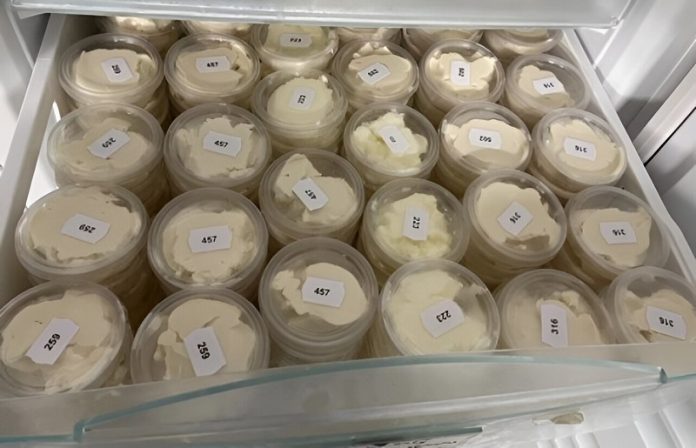
Wageningen University researcher Qi Wang has developed a new type of low-sugar ice cream that closely mimics the texture and melting properties of traditional ice cream.
By replacing half of the sugar with broken-down proteins or the sweetener xylitol, Wang has managed to create a smooth and creamy low-sugar ice cream without the usual graininess found in other low-sugar versions.
However, the flavor still needs some improvement.
Reducing sugar in ice cream makes it a healthier treat, but low-sugar ice creams often have a gritty texture and don’t melt like regular ice cream, which can be off-putting for many people.
“Our tongues are very sensitive and can detect even the smallest differences,” explains Ph.D. candidate Wang.
To address this issue, Wang focused on developing a low-sugar ice cream that would have a similar texture and melting behavior to regular ice cream.
She successfully defended her thesis on this topic with the Physics and Physical Chemistry of Foods group.
Though ice cream may seem simple, it’s actually a complex food made up of fat droplets, ice crystals, air bubbles, and syrup water.
Sugar plays a crucial role in maintaining the structure of ice cream, particularly by controlling the size of ice crystals. “Sugar acts as an antifreeze agent,” says Wang.
Like salt on icy roads, sugar helps prevent large ice crystals from forming, which keeps the ice cream smooth and creamy.
Wang set out to find other substances that could replicate the role of sugar in ice cream. With her supervisor, Elke Scholten, she identified a few promising candidates, including the sweetener xylitol, the amino acid lysine, and a blend of peptides and amino acids.
Wang used a professional ice cream maker to mix the ingredients, replacing half of the sugar with one of the alternative substances.
She also added larger molecules like peptides or maltodextrin to maintain the ice cream’s thickness. This resulted in three new variants of low-sugar ice cream, each flavored with vanilla and sweetener.
In the lab, Wang tested the properties of her new ice cream using special equipment. She measured how quickly the ice cream melted and how hard it was, finding that her low-sugar versions were comparable to regular ice cream. But taste is just as important, so she invited 90 participants to try the new ice cream.
The testers agreed that the low-sugar ice cream had the same soft, creamy texture and melted like regular ice cream. However, the taste was not as well received.
The variants made with proteins and lysine scored around 4.5 out of 9, compared to 7.5 for regular ice cream. The proteins left a slightly salty or bitter aftertaste. The variant with xylitol scored higher, at 6.5, but still had some aftertaste.
Wang is optimistic that these aftertastes can be masked with stronger flavors like caramel or coffee. She is committed to improving her low-sugar ice cream and has big plans for the future.
“In ten years, I hope to open my own ice cream parlor, selling low-sugar ice cream,” says Wang, who is eager to gain more experience in the food industry in the Netherlands before pursuing her dream.





